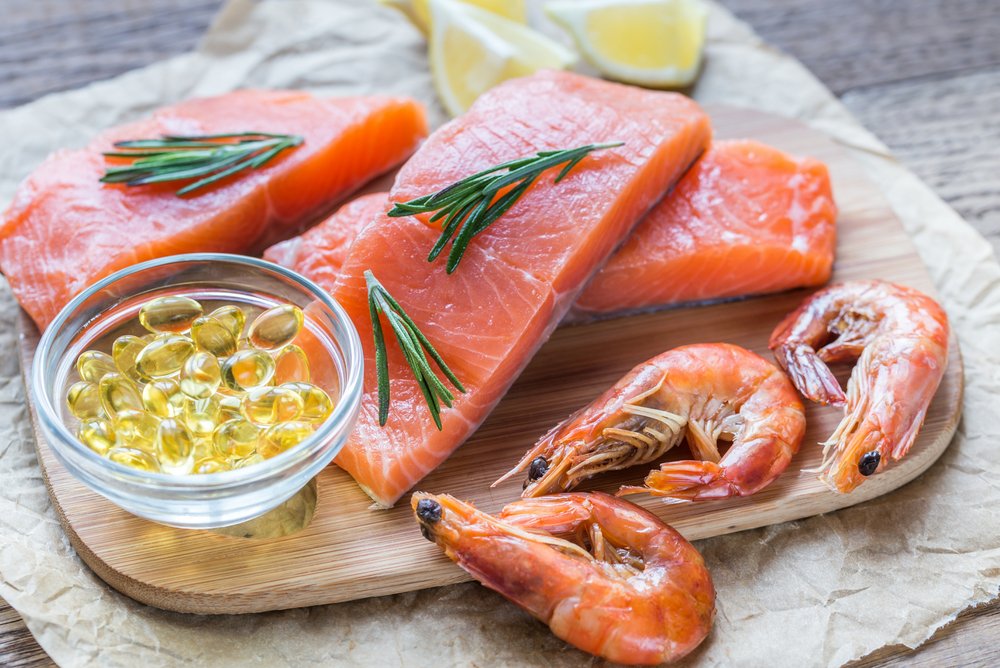Why Omega-3s Matter (and Why Most People Fall Short)
Omega-3 fatty acids are essential—your body can’t make them—yet they’re critical for heart, brain, and eye health and for a healthy pregnancy. There are three dietary omega-3s:
-
EPA (eicosapentaenoic acid)
-
DHA (docosahexaenoic acid)
-
ALA (alpha-linolenic acid)
You’ll get plenty of ALA from plant foods (flax, chia, walnuts, avocado, soybean oil), but the long-chain omega-3s EPA and DHA—the forms that most directly support heart, brain, and eye function—are harder to obtain consistently.
At the cellular level, EPA and DHA help regulate how cells respond to stressors and support a healthy inflammatory response. Keeping levels up has been linked with lower triglycerides and blood pressure and overall cardiovascular protection.
How Much Omega-3 Do You Need?
For healthy adults, the WHO recommends 250–500 mg/day of combined EPA + DHA.
For those who are pregnant or breastfeeding, add an extra 200 mg/day of DHA to support mom and baby.
Your Best Omega-3 Sources (Pick What Fits Your Lifestyle)
Fatty Fish
Whole seafood is the most nutrient-dense path to EPA and DHA—high protein, low saturated fat, and naturally bundled with other key nutrients. Fish are rich in omega-3s because they eat microalgae, the original source of EPA and DHA.
Top choices: salmon, mackerel, herring, sardines, anchovies, cod liver.
How much: most guidelines suggest 2–3 servings/week (≈3.5 oz cooked per serving) to average ~250 mg EPA+DHA/day.
Mercury note: Children and pregnant people should avoid high-mercury fish (shark, swordfish, king mackerel, tilefish) and choose lower-mercury options (e.g., salmon, canned light tuna, catfish).
Fish Oil Supplements
Don’t eat fish? Fish oil works. It’s made from oily-fish tissue and typically provides concentrated EPA and DHA (many products also contain vitamins A & D).
-
Effective for raising EPA+DHA status and lowering triglycerides (especially at 3–4 g/day under medical guidance).
-
Check the Supplement Facts for actual EPA and DHA per serving, not just “fish oil” grams.
Krill Oil
Sourced from small crustaceans that feed on algae, krill oil delivers long-chain omega-3s and naturally contains phospholipids and choline.
-
Harvested from clean Southern Ocean waters and considered a sustainable, low-contaminant option.
-
Compact capsules; some people find them easier to tolerate.
Algal Oil (Vegan/Vegetarian)
Algal oil provides long-chain omega-3s without fish. Research shows algal DHA can be bioequivalent to fish in raising blood DHA, and algal oils are free of cholesterol and common ocean contaminants.
-
Typical softgels supply ~400–500 mg DHA±EPA; liquids can provide ~300–900 mg/day.
-
Often higher cost than fish-derived options, but fully plant-based and sustainable.
Optimize with the Omega-3 Index (Don’t Guess—Test)
Co-invented by OmegaQuant’s Dr. Bill Harris, the Omega-3 Index measures EPA+DHA in red blood cell membranes, which mirrors levels in the heart and other tissues and helps gauge cardiovascular risk.
-
Target: ≥ 8% (optimal for heart health)
-
High risk: < 4% (common with Western diets)
Only EPA and DHA will raise your Omega-3 Index—source is your choice (fish, fish oil, krill, or algae) as long as the EPA+DHA amount is meaningful.
A simple at-home finger-prick test gives your percentage. With your result, use a personalized intake calculator to dial in how much EPA+DHA you need to hit—and maintain—your target.
Quick Start Plan
1) Choose your primary source
-
Seafood: 2–3 fatty-fish meals per week
-
Supplement: a daily product listing EPA + DHA totals (and form)
2) Hit your daily target
-
Adults: 250–500 mg/day EPA+DHA
-
Pregnancy & lactation: +200 mg/day DHA on top of the above
3) Verify and adjust
-
Test your Omega-3 Index, then re-test in ~8–12 weeks and adjust dose or food choices to reach ≥ 8%.
Bottom line: Most people need more EPA and DHA. Pick the source that fits your diet (fish, fish oil, krill, or algal oil), meet WHO targets, and use the Omega-3 Index to confirm you’re truly covered.




